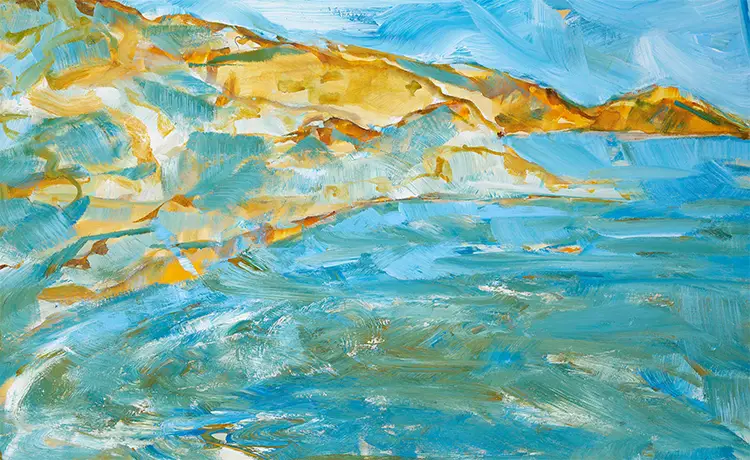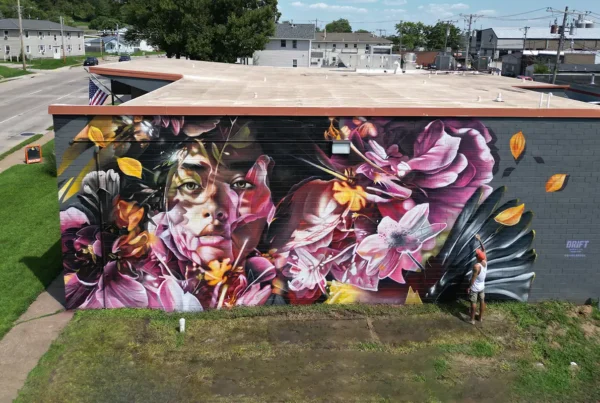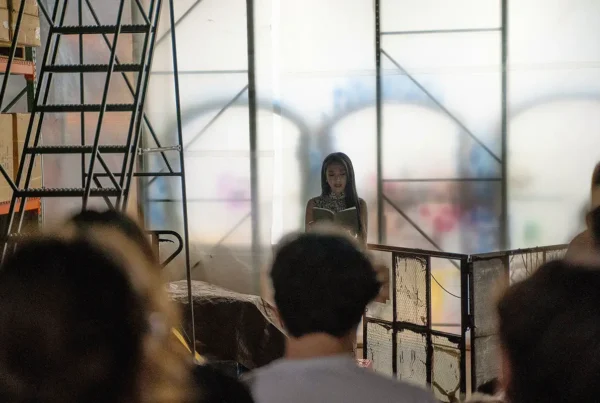“My most important artwork is definitely the ‘Sonnenkugel’ I made for Lufthansa, a memorial for the 150 victims of flight Germanwings 4U9525.”
Shaped by Legacy: A Life Lived Through Art
Jürgen Batscheider‘s artistic journey began in the quiet intimacy of his grandfather’s studio, where the air was heavy with paint and purpose. His grandfather, a respected painter in the local art community, introduced him to the world of visual expression not through lectures, but through shared experiences. From early childhood, Batscheider was immersed in a space where canvases spoke louder than words, and creativity was treated as an everyday necessity rather than a lofty ideal. By the age of 22, he had already mounted his first exhibitions, signaling the beginning of a lifelong devotion to both sculpture and painting.
In his mid-twenties, Batscheider deepened his commitment by enrolling in a sculpture school in Berchtesgaden, Germany. Over three formative years, he refined his understanding of form, material, and dimensionality. This period became foundational for his evolving practice, which would later embrace both the physical rigor of sculpting and the emotional fluidity of painting. His career continued to expand not only through personal creation but also through facilitating collective artistic exchange. Batscheider organized seven major art symposia, spanning locations from the ancient theatre of Milos under the patronage of Melina Mercouri to the European Art Symposium “Aiolos” on Tinos, and multiple events throughout Germany from 2015 to 2019. These gatherings became fertile grounds for cross-cultural dialogue and experimental practices.
His participation in numerous international sculpture symposia further enriched his perspective. From Davos and Bueren in Switzerland to Sur En, Laax, and venues across Austria and Germany, Batscheider honed a collaborative approach, sharing techniques and philosophies with fellow sculptors. These experiences shaped not just his technical abilities but also a broader understanding of the cultural role of sculpture. His career has grown not by following trends, but by listening—first to his grandfather, then to materials, landscapes, and the deeper meanings embedded in silence.
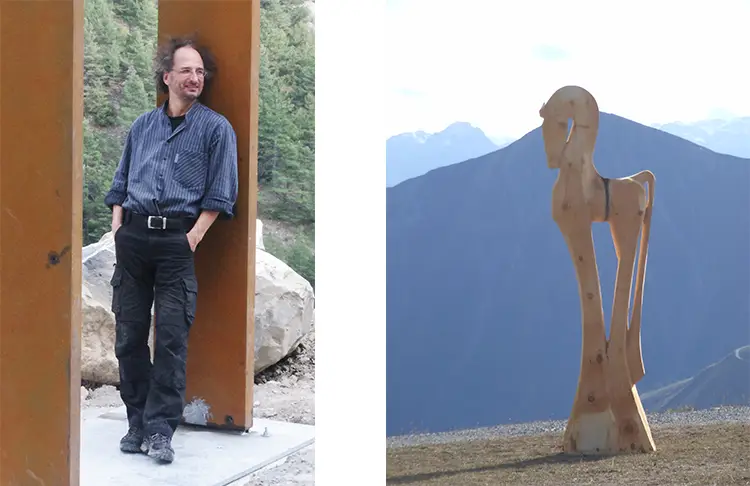
Jürgen Batscheider: Between Forest and Shoreline
Batscheider’s present-day life and work unfold far from the noise of urban centers. He lives in the southern German countryside, surrounded by the serenity of nature and the solitude he considers essential. His studio is nestled outside of town, where he focuses primarily on sculpting wood and stone. This space has become more than just a workshop—it is home to a sculpture park and several land art projects, which visitors often describe as timeless sanctuaries. The land itself seems to breathe with his vision, transforming into a meditative environment that invites reflection and wonder.
Winters, however, belong to painting. During the colder months, Batscheider relocates to Southern France or other quiet locations along the Mediterranean coast. There, his practice shifts from carving form to exploring color and abstraction. His paintings are deeply emotional landscapes, filtered through memory and mood rather than direct observation. Since his early twenties, he has followed this seasonal rhythm, painting without the constraints of a formal studio in the beginning, and eventually finding his artistic stride through this structured alternation between sculpture and painting. His recent 2025 series features a single landscape motif rendered in multiple variations, each one capturing a different emotional tone through expressive abstraction.
His sculptural work, by contrast, maintains a closer dialogue with physical form. Figures of animals and humans emerge from wood as “realistic abstractions,” often painted in vibrant hues or, more recently, blackened through carbonization. This technique is not merely aesthetic—it is philosophical. By burning the wood to create a deep, charred surface, Batscheider underscores our shared biological essence: carbon. In pairing these blackened forms with gold leaf, he introduces a symbolic duality. Gold, originating from the stars through supernovae, represents the divine or eternal aspect of life. His sculpture “Angel” embodies this synthesis—a life-sized carbonized figure with golden wings, currently in progress and soon to be displayed in dialogue with the sanctuary at Maria Steinbach in Germany.
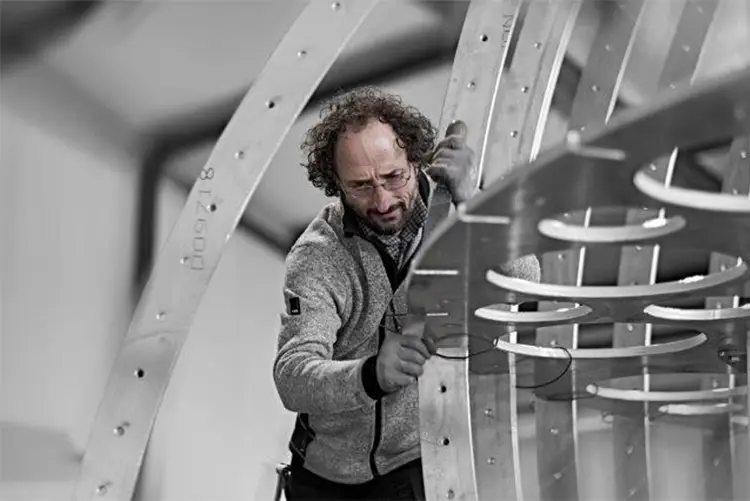
Material Memory and Emotional Precision
Batscheider’s creative influences stretch across time and geography. While his admiration once gravitated toward Pablo Picasso, his current fascinations lie with the atmospheric subtleties found in the works of Claude Monet and J.M.W. Turner. In sculpture, his touchstones reach back to ancient Greece, the elongated forms of Alberto Giacometti, and even further into prehistory. The cave carvings discovered in the Lone Valley near Ulm—some of the oldest known human-made objects—resonate deeply with him, serving as a reminder of how enduring the impulse to shape meaning from matter truly is.
Life experiences, too, have carved their place in his art. A particularly poignant example is his installation “boatpeople,” an emotionally charged tribute rooted in a personal connection. The idea emerged from a colleague he met in his twenties, a Vietnamese refugee who had escaped Chinese invaders aboard the humanitarian vessel Cap Anamur. That story stayed with Batscheider, eventually inspiring him to create an installation composed of hundreds of small boats made from reclaimed wine barrels. These vessels, unified in form yet each unique, represent stories of displacement and hope. The installation has been widely exhibited and was especially significant when displayed along the Mediterranean coastline in 2014, directly facing North Africa.
Themes of life, death, and transcendence are not abstract in Batscheider’s work; they are given physical presence. Nowhere is this more apparent than in the “Sonnenkugel” (Sun Sphere), his most significant public sculpture to date. Commissioned by Lufthansa as a memorial for the 150 victims of Germanwings Flight 4U9525, the piece was selected through a global competition. The sculpture stands at the crash site, composed of 149 gilded aluminum panels representing each victim, enclosing a crystalline structure that holds individual wooden commemorative spheres. Its golden surface evokes permanence, the sun, and life itself. A complementary “Solar Portal” aligns precisely with the sculpture across the valley, creating a visual connection between visitors and the secluded site. This work transcends form and function—it is a site of grief, remembrance, and collective healing.
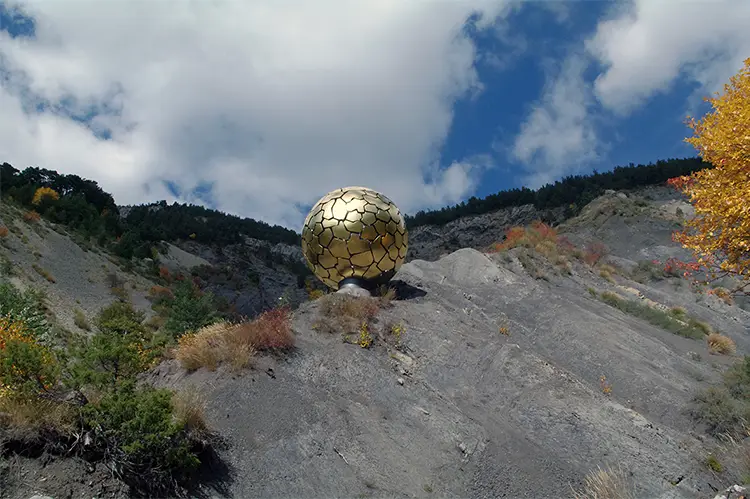
Jürgen Batscheider: Future Symbols in Glass and Stone
Batscheider’s commitment to symbolic storytelling continues to drive his upcoming projects. In 2025 and 2026, he will embark on the creation of a new sculpture titled “Papillon,” an ambitious composition blending colored glass, aluminum, and marble. The piece draws upon the ancient Greek understanding of the word “psyche,” which means both soul and butterfly. This dual meaning becomes the foundation for the sculpture’s exploration of grief and spiritual connection, specifically as a medium of communication with a car accident victim. Unlike traditional memorials that focus on loss, “Papillon” seeks to illuminate the unseen dialogue between the living and the departed, using material and form to express an intangible bond.
The interplay of materials in “Papillon” is essential to its meaning. Glass, with its transparency and fragility, suggests the ephemeral nature of life and memory. Marble introduces a sense of timelessness and weight, grounding the piece in earthly permanence. Aluminum, often associated with modernity and lightness, bridges these two extremes. Together, these materials become metaphors for presence and absence, offering viewers a contemplative space to consider transformation and continuity beyond physical existence.
What sets Batscheider apart is his refusal to separate technical execution from philosophical inquiry. Every element he introduces—whether carbonized wood, golden surfaces, or reclaimed materials—serves a conceptual purpose. He approaches sculpture not only as a form of artistic expression but as a vessel for metaphysical questions. In this way, his forthcoming “Papillon” is not merely a sculpture, but a proposition: that art can become a bridge between worlds, and that memory, like form, can be shaped, honored, and shared.
